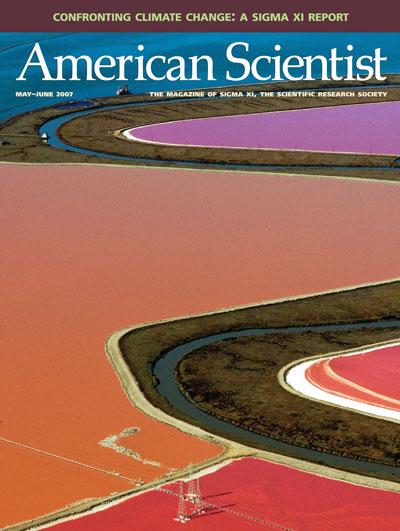Computing Science


The brilliant colors of the Cargill salt ponds fringing San Francisco Bay are created by a complex ecosystem. Water from the bay is pumped in, then shuttled from pond to pond as it evaporates to leave behind solid salt, a process that takes about five years. The increasingly salty brine hosts a succession of life forms, so the color of the pond can indicate the concentration of its salts. Low to mid-salinity ponds appear deep green; the color lightens, then shifts to oranges and reds as rising salinity favors salt-loving algae, brine shrimp and microorganisms. As Shiladitya DasSarma explains in "Extreme Microbes," the biology of haloarchaea, which lend purple and scarlet tints to hypersaline waters, holds clues to life in many forbidding environments. Similar organisms can endure the lack of oxygen, near-complete desiccation, high-energy solar radiation and extremes of temperature and pH. (Cover image by Robert Campbell Photography/Chamois Moon.)
Salt-loving microorganisms are helping biologists understand the unifying features of life and molecular secrets of survival under extreme conditions
The complex structure of soot greatly influences the optical effects seen in fires
The ability to think about thinking may be the critical attribute that distinguishes us from all other species
Ignorance of how sample size affects statistical variation has created havoc for nearly a millennium

Over the Mountains: An Aerial View of Geology · Ham Radio's Technical Culture · Middle World: The Restless Heart of Matter and Life
Click "American Scientist" to access home page